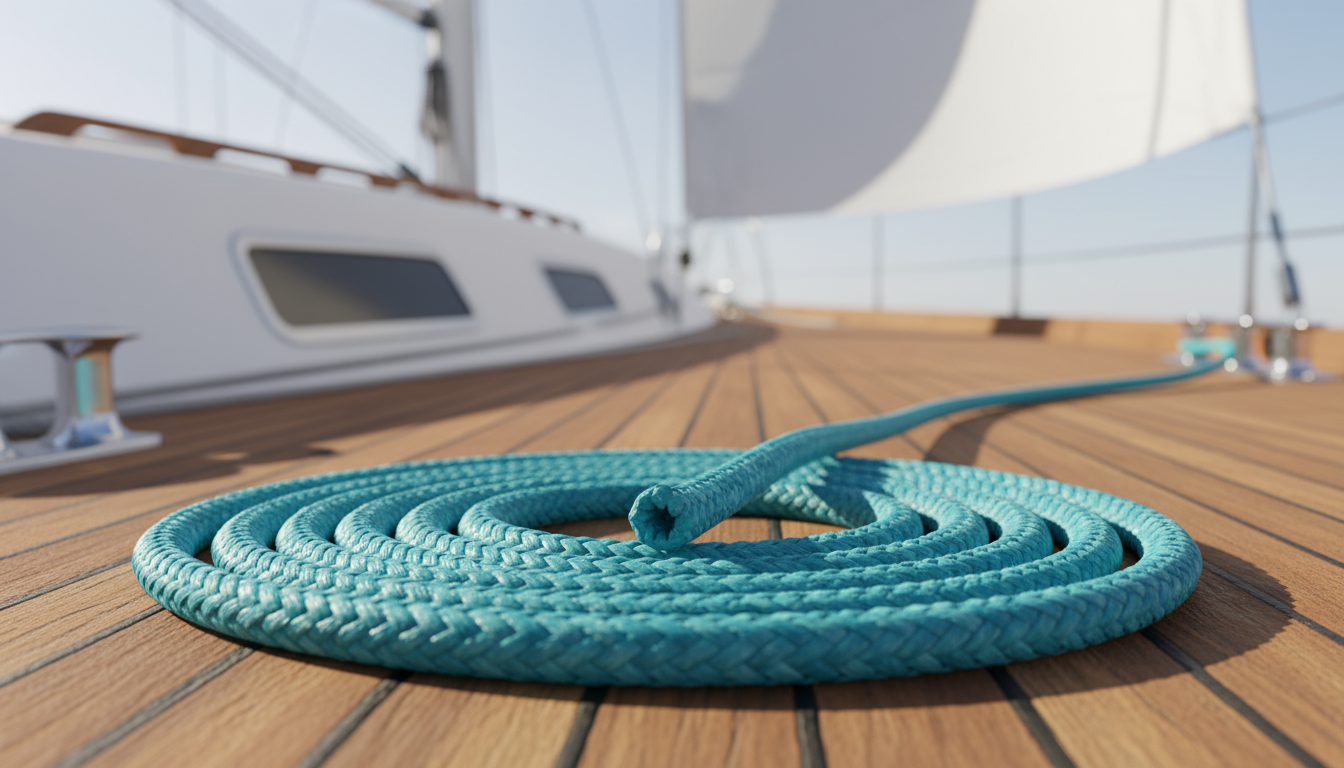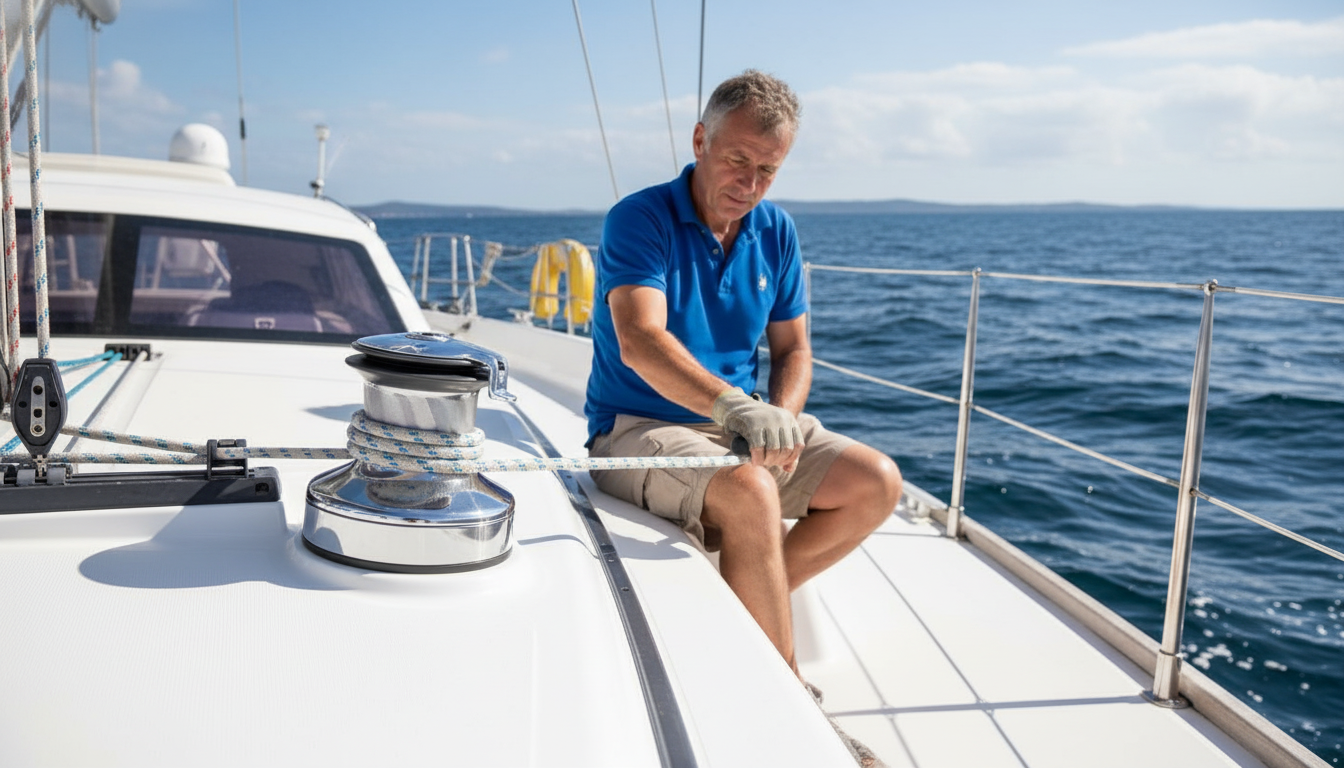Tech‑12 rope delivers markedly less stretch than nylon, with low elongation that keeps your sail trim spot‑on.
What you’ll gain – 3 min read
- ✓ Low elongation versus nylon → noticeably tighter sail control.
- ✓ Torque‑free handling that reduces winch wear and hockles.
- ✓ UV‑stabilised polyester for excellent strength retention in long‑term marine exposure.
- ✓ iRopes OEM/ODM with ISO 9001–backed quality, custom colour/branding, and pallet shipping worldwide.
You’ve probably been tolerating the sluggish pull of nylon halyards, assuming it’s just the nature of sailing. What if we told you that swapping to a 12 strand polyester rope can dramatically cut stretch and quiet torque‑induced winch chatter—often within a similar budget? Keep reading and we’ll show exactly how Tech‑12 delivers that edge, plus the simple steps to size, splice, and order your custom rope.
Understanding Tech 12 Rope: Definition and Core Features
After learning how nylon’s give‑away feel can ruin a trim, you’ll want to know exactly what replaces it. Tech 12 rope is a specialised 12‑strand polyester line built for marine rigs that demand precision. In plain terms, it is a 12‑strand, 100 % polyester, torque‑free, low‑stretch rope engineered to stay taut even when the wind pushes hard.

When you ask, “What is Tech‑12 rope?” the answer is simple: a 12‑strand, 100 % polyester rope that delivers torque‑free handling and minimal stretch, making it ideal for halyards, lazy‑jacks, and any running rig on a sailboat.
- Low stretch – very low elongation under working load helps your sail stay where you set it.
- Torque‑free handling – the balanced 12‑strand hollow braid resists twist, preventing uneven spooling on winches.
- Heat resistance – polyester withstands winch friction well, extending service life.
Another common query is, “How many strands does a 12‑strand polyester rope have?” The answer is exactly twelve individual strands, each contributing to the rope’s strength and stability. This construction is why the line feels solid yet supple under the hand.
“Polyester’s low‑creep makes it the material of choice for high‑load, low‑stretch applications like halyards. Tech 12’s twelve‑strand design removes torque, giving sailors a clean, predictable line.” – Marine‑Rope Engineer, John M.
As a 12‑strand hollow braid, the rope balances weight and strength for marine use. The layout also makes splicing straightforward—12‑strand braids accept reliable eye splices without bulky hardware, giving you secure terminations that run cleanly through sheaves.
Understanding these basics sets the stage for the detailed specifications that follow, showing how each feature translates into real‑world performance on the water.
12 strand polyester rope specifications for sailing
Now that you understand the construction basics, let’s dive into the exact numbers that matter when you size a line for your boat. These specifications translate the 12‑strand design into real‑world performance you can trust on the water.

- Strand count & braid – twelve individual strands are woven into a balanced hollow‑braid that runs torque‑free and is easy to splice.
- Material properties – 100 % polyester, UV‑stabilised and low‑creep, offering dependable strength retention under sun and cyclical loading.
- Strength & size range – break strength spans from 5,500 lb for a 3/8″ line to 49,999 lb for a 1½″ line. The working load limit is typically one‑fifth of the break rating. Common diameters range from 3/8″ to 1½″ to suit everything from dinghies to large yachts. The answer to “What is the break strength of Tech‑12?” is a broad, size‑dependent range that lets you match the rope to the load of your rig.
Typical Diameter Guide
For a 30‑ft cruiser’s mainsail halyard, many sailors select 3/8″–7/16″ (≈ 10–11 mm) to balance grip, weight, and strength. On a racing dinghy, a 3/8″ line often provides ample strength without adding unnecessary weight.
With these numbers in hand, you can calculate the diameter you need, compare it against your boat’s load chart, and feel confident that the rope will hold under real sailing conditions. For deeper insight into braid constructions, compare our Titan Braid vs Solid Braid polyester rope guide. The next step is to see how those specs influence performance across different rigging applications.
Sailing applications and performance benefits
Now that you know the break‑strength and diameter options, it’s time to see how those numbers translate into everyday sailing. Whether you’re hoisting a mainsail on a 30‑ft cruiser or trimming a jib on a racing dinghy, the line you choose directly affects how the boat feels under sail.

In practice, you’ll find Tech‑12 rope most often as:
- Halyards – the primary lift for mains, jib, and spinnaker; the low‑stretch braid keeps the sail set exactly where you want it.
- Lazy‑jacks – the line that guides the mainsail into the boom; torque‑free running prevents uneven stacking.
- Running rigging – sheets and control lines where quick, smooth adjustments are essential.
Low stretch
Low elongation helps the sail hold its shape, so you maintain drive and consistent trim.
Torque‑free
The balanced braid resists twist, eliminating winch chatter and making spooling effortless.
High stretch
Nylon lines can elongate significantly, causing the sail to lose its optimal shape as wind pressure builds.
Twist prone
Traditional ropes may develop torque, which leads to uneven spooling and extra wear on winches.
For long‑term marine exposure, rinse the rope with fresh water after each outing, periodically clean with mild soap, and store it in a shaded, dry locker to minimise surface degradation.
Answering a common query: yes, Tech‑12 rope is perfectly suited for sailing. Its low‑stretch polyester fibres resist UV, so the line maintains performance after months in the sun. The torque‑free design means you won’t wrestle with a twisted halyard, and the heat‑tolerant fibres handle repeated winch friction.
With these advantages in mind, the next step is figuring out the exact diameter and splice method for your boat’s rig. That knowledge will let you match load calculations to the right size, ensuring both safety and optimal performance.
Choosing, Splicing, and Purchasing Options
Now that you understand why low‑stretch, torque‑free performance matters, the next step is matching the rope to your boat’s specific loads and then getting it on board without hassle.
- Calculate the load – determine the maximum force your halyard or lazy‑jack will experience under full sail.
- Match diameter to break strength – choose a line whose break rating is at least five times the expected load.
- Decide on construction details – 12‑strand hollow braid is easy to splice; consider protective covers or chafe gear for high‑wear zones.
With those three factors in mind, most sailors find a simple decision matrix helpful: load ÷ 5 = minimum break strength, then select the smallest diameter that meets that rating and your sheave size. For a typical 30‑ft cruiser’s mains halyard, many crews choose 3/8″–7/16″ for a practical blend of grip and strength.
When the right size is chosen, a clean splice ensures the line stays torque‑free for the life of the rig. Below is a concise, step‑by‑step guide that works for any 12‑strand polyester rope.
- Measure and mark your eye size, then mark a bury length on the standing part (about a fid‑length or more).
- Open the hollow braid with a fid and pass the tail inside to form the eye.
- Milk the rope to bury the tail smoothly and seat the eye against the mark.
- Taper the tail by trimming fibres gradually, then complete the bury for a neat finish.
- Lock‑stitch the buried section with whipping twine to secure the splice.
- Pre‑load the splice gently and inspect for even tension before use.
Common pitfalls include using too short a bury, failing to taper the tail, and skipping the lock‑stitch—all of which can reduce splice efficiency.

Finding a reputable source for Tech‑12 rope is straightforward. Major sellers such as Samson Rope, Pelican Rope, Knot & Rope Supply, and online marketplaces like Amazon stock standard diameters. For wholesale orders or custom colours, iRopes offers direct OEM/ODM quotes with ISO 9001‑backed quality assurance, dedicated IP protection, non‑branded or customer‑branded packaging, and pallet shipping worldwide. For sailors seeking specialist suppliers, see our guide to the best yachting rope suppliers.
Price varies with size and length: a 3/8″ line is often under $40 at shorter lengths, while a 1½″ bulk spool can exceed $700. Mid‑range options (5/8″–¾″) typically fall between $90 and $300, giving you flexibility to balance budget and performance.
Price & Purchase
Standard sizes are available from about $35 (3/8″) to around $750 (1½″), depending on length. iRopes can provide a custom‑cut quote that includes branding, colour options, IP protection, and pallet‑level shipping directly to your dock.
Armed with the load‑calc matrix, a reliable splice routine, and a clear view of price tiers, you’re ready to equip your rig with the perfect Tech‑12 rope. The next logical step is to download the full spec sheet and request a personalised quote, ensuring every line on your boat meets the exact demands of your sailing style. To broaden your knowledge of rope selections, check out our article on understanding rope types and strength with ends and clamps.
Request a personalised quote for your sailing rig
This guide has shown how Tech‑12 rope delivers low‑stretch, torque‑free performance and heat tolerance for precise sail trim, while a 12 strand polyester rope brings UV‑stabilised durability to the sailing field. You’ve learned to calculate load, select an optimal diameter, and splice a clean eye for halyards, lazy‑jacks, or running rigging.
If you need a customised solution—specific colours, branding, bulk packaging, or a detailed load‑calc guide—simply fill in the form above. iRopes’ ISO 9001 manufacturing, OEM/ODM expertise, and IP‑protected process ensure fast, reliable delivery worldwide.